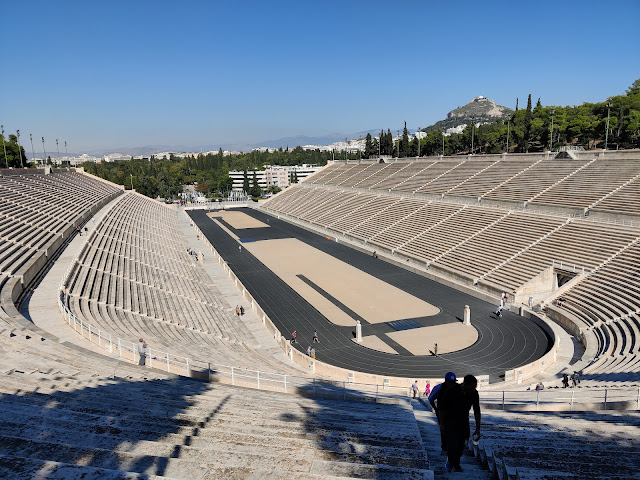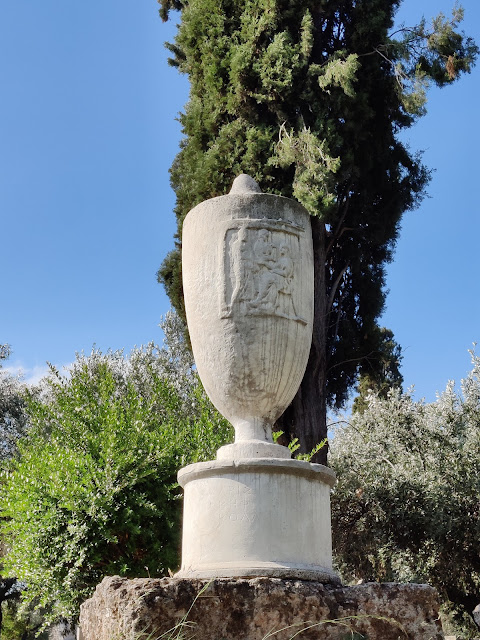Last day of our Greek holiday, so some gentle sightseeing after having done the "heavy" stuff yesterday. I recommended the Panathenaic Stadium, as a site I really liked, but which is less visited, in part because you can see its general form from the street. But to my mind it is well worth exploring inside, in part for the views from the top tier of seating. But I know I am going to be biased here because it combines two of my passions, Classical architecture and athletics!
The stadium is both ancient and modern. It is on the footprint of the ancient stadium in Athens, but totally rebuilt (in the ancient manner) for the 1896 Olympics, the first modern Olympiad. Although it is still used for athletics, mostly training, it is totally unlike a modern stadium because of its shape. Long and thin. Modern athletes could not cope with the sharp bends. But that probably tells us something about ancient Olympic events. They did sprints, like our 100m, just up a straight, and longer distance events, in which case the stadium would be fine for running, say, a mile race. But for a one lap sprint it would be hopeless as you would have to reduce speed so much to get round the tight bends.
The modern stadium is probably rather more pristine than the original - better techniques in cutting marble. Although the marble is mostly more modern than the 1896 date for the stadium. They ran out of money/time in the 19th century and so for the Olympics most of the seating was made of wood and painted white. Only later were funds available to complete the originally intended marble.
There is an obvious photo opportunity set up here - a podium finish. Thibault not quite in the right costume, but as you can see we were not exactly having to fight off other tourists. In height of the season there are queues to get a snap of family members posing!
There is also a small Olympic museum, which I think is fascinating in its own right, even though it doesn't have much in it. But what it does have is a complete set of Olympic posters. And these are wonderful as a history of design in the last century or so. Especially as each of them reflected "modern" design when they were made.
 |
| The iconic London 1948 Olympic poster |
This is the original tunnel out of the stadium (to what is now the museum)
It is definitely worth the climb to the top
We found this wonderful ouzo bar. And to be honest the wonderful thing was the simple decor. Just put out all your most colourful drinks on shelves, backlight them and hey presto.
































































































































































































